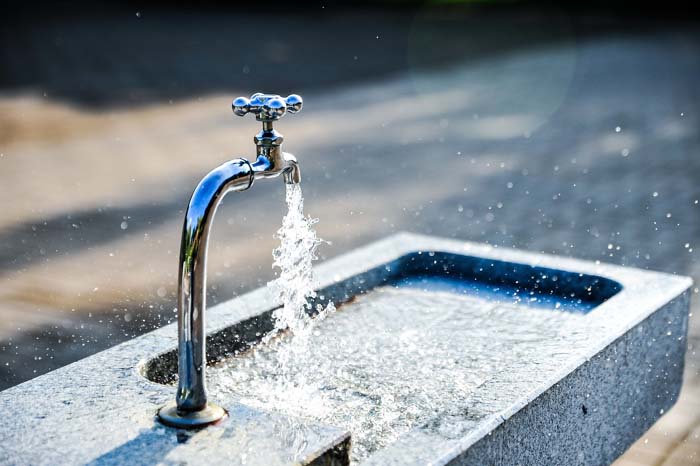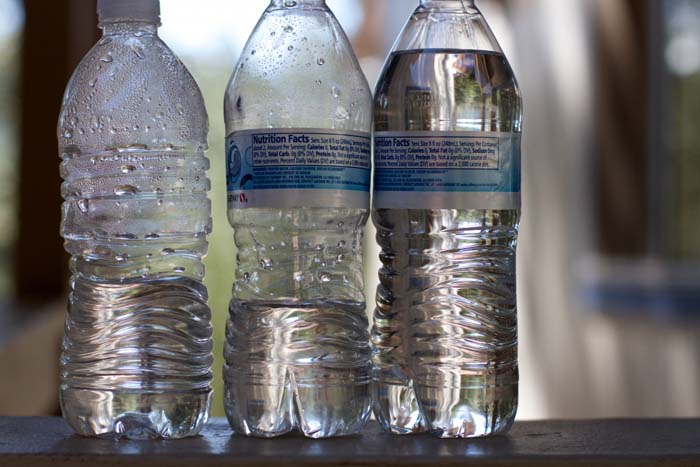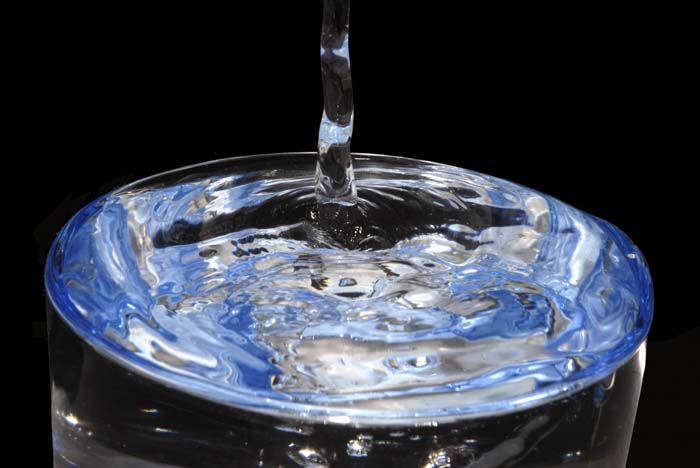
Water is essential for the survival of all known living things. There is no shortage of water on Earth, but water quality is an additional important factor in meeting this basic requirement. Contamination and pollution in various water distribution mechanisms, both mechanical and natural, can jeopardize the integrity of water purity.
Not only does this contamination affect people’s ability to consume water, but it also makes life difficult for essential microbes, organisms, and animals vital to maintaining a balanced ecosystem.
Ensuring a healthy and pleasant living environment begins with water quality. Your family’s health and safety depend on having access to clean water, and Express Drainage Solutions gets that. In this article, we will discuss the main elements that affect water quality.
 What makes water quality so crucial?
What makes water quality so crucial?
Staying hydrated is essential for maintaining a good body temperature and overall well-being. First and foremost, it keeps you from becoming dehydrated, which causes constipation, mood swings, disorientation, and excessive heat. Maintaining an adequate fluid intake aids bodily function by lubricating joints and the spinal cord. In addition to facilitating the elimination of waste and toxins through urine or sweat, consuming water aids in this process. Harmful pollutants, such as viruses and bacteria, can be introduced to the body by consuming dirty water. A basic human right is the availability of safe water quality. This is because it is essential to maintaining good health and normal bodily functions.
5 qualities of good water
Water that is both safe to drink and rich in minerals is quality water. Maintaining a stable pH and being devoid of potentially dangerous substances such as chemicals, viruses, and bacteria are essential.
1. Clean and clear
Pure, uncolored water is ideal. It must be clear and devoid of cloudiness, sediments, or particles. In most cases, you won’t need to filter crystal-clear water before drinking it. Quality water doesn’t contain chemicals, viruses, or bacteria.
2. Balanced pH
Examining its pH level is one way to determine whether water is alkaline or acidic. The ideal pH range for water is between 6.5 and 8.5; however, any water will do. Too much acidic or alkaline water can irritate the digestive tract and impair health.
3. Fluoride addition
To combat tooth decay, fluoride is a mineral that specialists add to water supplies. Fluoride is a great preventative measure against tooth decay. This is because it fortifies tooth enamel and stops harmful bacteria from multiplying. Too much fluoride, though, can lead to dental fluorosis. This condition discolors teeth and leaves them with white or brown patches. As a result, you should check the fluoride levels in the water you consume to make sure they are enough for good oral hygiene.
4. Source
An important component in defining water quality is its source. Good water typically comes from a natural, untreated source like a well or spring. However, water from contaminated lakes or rivers could have dangerous toxins that people shouldn’t drink. Consequently, you should always check the water’s safety and quality to make sure you know where it comes from.
5. Mineral content
The optimal mineral content in water includes the health-promoting potassium, magnesium, and calcium trio. These minerals aid immune system support, bone health, and cardiovascular disease prevention.
Factors that affect water quality
The two main water sources that have the potential to impact the water quality that is accessible to us are:
- Surface water
Such is gathered from waterways such as streams, lakes, and rivers. Contaminants that can end up in surface water include things like sewage, agricultural runoff, and industrial waste. Neglected exposure to these contaminants poses a significant threat to human health. This increases the likelihood of gastrointestinal and respiratory problems.
- Groundwater
This comes from underground water sources called aquifers. While surface water isn’t immune to pollution, groundwater is typically better protected. This is due to its underground storage location.
Industrial waste and agricultural runoff are surface pollutants that can seep into groundwater. On the other hand, leaking underground storage tanks and septic tanks are examples of underground water contaminants.
A number of variables, including sedimentation, pH, and temperature, can diminish the quality of the water, whether it is groundwater or surface water.
Here are factors that affect water quality:
Water quality factors impact the water that flows from your taps. For example, your city’s capacity to maintain safe standards for public drinking water, the condition of your local watersheds, and the geological features of your region all contribute to quality water for drinking.
Water contaminants pose a threat to human health. Potentially vulnerable populations include individuals with compromised immune systems, the elderly, pregnant women, young kids, and those experiencing reproductive issues, neurological issues, or gastrointestinal diseases.
- Treatment procedures
Public water treatment plants employ several procedures to remove contaminants from the water supply before it reaches your house. These procedures may include disinfection, chlorination, and filtration. The water must undergo sufficient treatment to ensure it is free of contaminants and dangerous microbes.
- Water source
The quality of water is greatly affected by where it comes from. Contaminants, pollutants, and the mineral content of surface water from bodies like reservoirs, lakes, rivers, and groundwater from wells can differ. The initial stage in evaluating possible water quality concerns is to become familiar with your water source.
- Material and age of pipes
This aspect affects a family’s water supply. The water that reaches your home’s pipes is sometimes of low quality. The water in your taps and other plumbing fixtures depends on age and condition. Lead can be present in water from older fixtures and pipes.
Additionally, mineral and metal particles can collect at faucet openings and contaminate the water supply. Water heaters are another common residential item that might affect water quality. To keep harmful microbes and sediment from building up in water heaters, they must be serviced and drained once a year. Modern pipes composed of materials such as PEX or PVC are less likely to impact water quality. Finding problems early is possible with routine inspections and maintenance.
- Contaminants and nitrates
Industrial chemicals, pesticides, and nitrates commonly found in agricultural runoff can seep into water sources. Pregnant women and babies are especially vulnerable to the health hazards posed by these substances.
- Use
Excessive use puts pressure on the water system, lowering water quality. Other people in your area use the same water source as you do. When everyone uses water at once, it overwhelms the system. Declining groundwater tables may result in higher levels of both natural and man-made contaminants.
- Ecological factors
We must consider ecological considerations when discussing the elements that influence water quality. Overloading water treatment plants and increasing the danger of contamination are consequences of natural disasters such as quick snowmelt, flooding, or severe rainfall. Conversely, droughts can diminish water availability and concentrate contaminants. This will impact the quality of water sources that are accessible.
- Minerals and hardness
Problems like scale formation in pipes and appliances are symptoms of water hardness. This is due to minerals such as magnesium and calcium. Fixing water hardness won’t make you sick, but it will make your appliances and plumbing work better.
- Corrosion and scaling
The way water looks, smells, and tastes can be changed due to scaling and corrosion in pipes. Because of the potential discharge of copper or lead into the water supply, the water’s safety is compromised when pipes corrode. In order to keep water quality high, it is necessary to treat water properly and deal with corrosion in plumbing systems.
- Organic contaminants
When water is contaminated with bacteria and other microbes, its quality suffers. Water with a bad odor indicates the presence of organic pollutants. While simple water treatment methods and filters can handle organic contaminants, tackling certain microorganisms can be more of a challenge, and ignoring them could put people’s health and safety at risk.
 Presence of particles and sediment
Presence of particles and sediment
Water that contains debris, particles, or sediment will have diminished quality and clarity. A good filtering system can enhance the flavor and look of your water and remove these contaminants.
- Levels of pH
You can tell how acidic or alkaline water is by looking at its pH level. Extremely acidic or basic water can alter its flavor, susceptibility to corrosion, and efficacy of treatment procedures. Ensure the pH is right for best system performance and water quality.
- Water pollution
Chemicals used around the house, such as pesticides, cleaning products, and decomposing organic matter (leaves, etc.), are major contributors to water contamination. Everything you flush down the toilet eventually returns to the water system.
Take away
For several reasons, it is important to understand the elements that influence water quality. Water is essential for life on Earth, and its purity has far-reaching consequences for human and environmental health. Protecting ourselves and our families requires an awareness of the elements that influence water quality so that we may make knowledgeable decisions. With this information, we can evaluate the quality of our input water and decide whether to rent or purchase a water filter.
